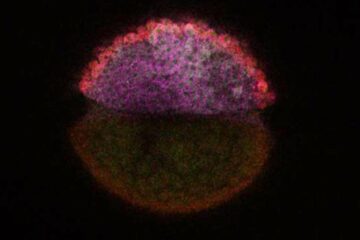Researchers Create Promising Vaccine for Staph Infection

Each year, nearly 500,000 Americans are admitted to hospitals for staph infections. Research shows that more than 50 percent of those are from methicillin-resistant S. aureus, or MRSA, which is resistant to current antibiotics.
Boise State biology scientists created a vaccine that uses a cholera toxin molecule called A2/B chimera, which also contains an iron-regulated surface determinant from S. aureus, that was given to mice through the nose. The researchers believed that these stable chimeric molecules with unique binding properties would provide immunity to staph infections. The results supported this theory and showed that the new vaccine could induce significant immunity to staph in mice when delivered through the nose.
The results appear online in the journal Clinical and Vaccine Immunology.
“We knew that a successful vaccine against staph would have to contain a combination of antigens,” study co-author Juliette Tinker, assistant professor of biological sciences at Boise State. “Staph is a very complex bacteria that has a lot of proteins on the surface that change frequently, so we picked one that seemed to be present in many of the strains of staph. We knew only incorporating one or two proteins into a vaccine wasn’t enough, we needed many.”
Tinker and her research team studied the immune response in 24 mice that were given the vaccine they created and measured how many antibodies the mice produced against staph over 45 days. The results showed the mice had a significant number of antibodies against staph, although a booster dose was needed after the 10th day.
Media Contact
More Information:
http://www.boisestate.eduAll latest news from the category: Life Sciences and Chemistry
Articles and reports from the Life Sciences and chemistry area deal with applied and basic research into modern biology, chemistry and human medicine.
Valuable information can be found on a range of life sciences fields including bacteriology, biochemistry, bionics, bioinformatics, biophysics, biotechnology, genetics, geobotany, human biology, marine biology, microbiology, molecular biology, cellular biology, zoology, bioinorganic chemistry, microchemistry and environmental chemistry.
Newest articles

Attosecond core-level spectroscopy reveals real-time molecular dynamics
Chemical reactions are complex mechanisms. Many different dynamical processes are involved, affecting both the electrons and the nucleus of the present atoms. Very often the strongly coupled electron and nuclear…

Columbia researchers “unzip” 2D materials with lasers
The new technique can modify the nanostructure of bulk and 2D crystals without a cleanroom or expensive etching equipment. In a new paper published on May 1 in the journal…

Decoding development: mRNA’s role in embryo formation
A new study at Hebrew University reveals insights into mRNA regulation during embryonic development. The study combines single-cell RNA-Seq and metabolic labeling in zebrafish embryos, distinguishing between newly-transcribed and pre-existing…





















